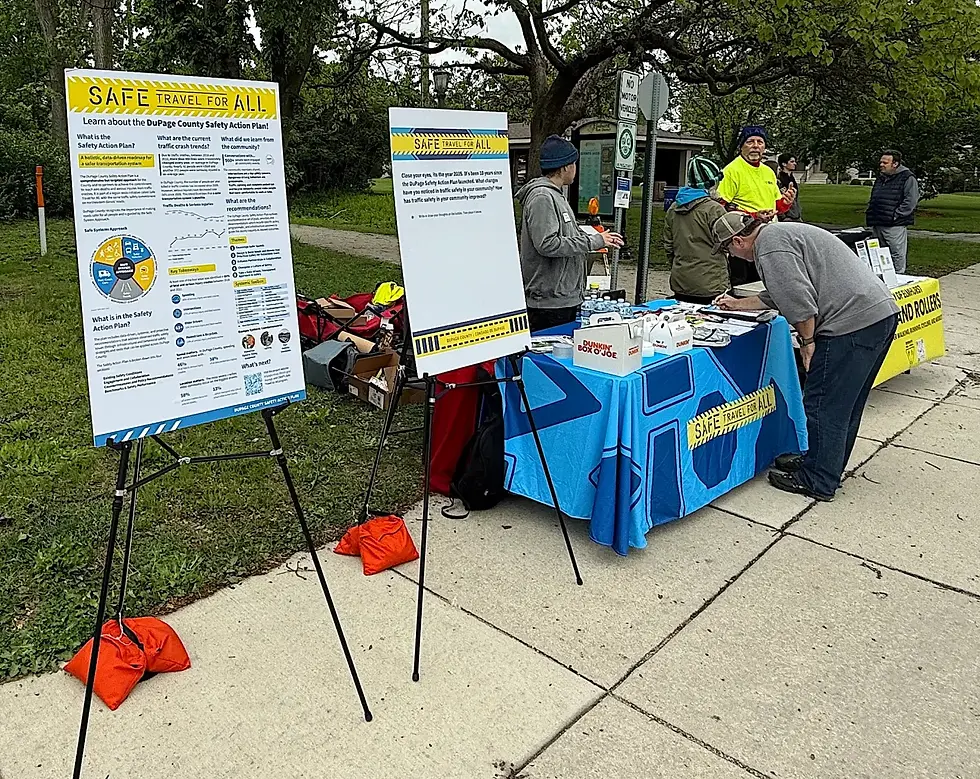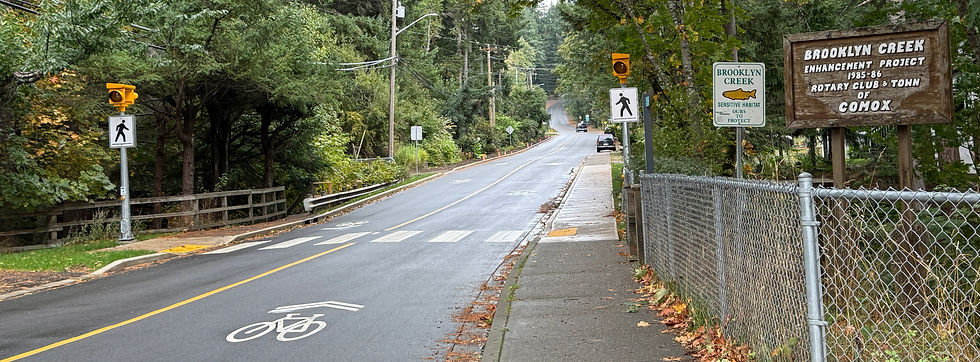Building Safer Communities in DuPage County
- JSF Technologies

- Jul 7
- 4 min read

How RRFBs and public engagement are driving community-led traffic safety improvements
At JSF Technologies, we've long championed the transformative impact of Rectangular Rapid Flashing Beacons (RRFBs) in creating safer streets for all users. A recent community engagement event in DuPage County and Elmhurst perfectly illustrates why these proven safety countermeasures are essential investments for communities serious about protecting their most vulnerable road users.
When Communities Take the Lead on Safety
This past May, DuPage County and the City of Elmhurst demonstrated innovative community engagement by transforming road space near the Illinois Prairie Path into vibrant "parklets" filled with lawn furniture, flower pots, and activities for families. But this wasn't just about creating temporary green space – it was a strategic outreach effort to educate residents about the DuPage County Safety Action Plan and its life-saving traffic safety recommendations.
The event took place at a critical location: the intersection where the multi-use trail crosses York Street in west-suburban Elmhurst. As DuPage Division of Transportation's Chief Transportation Planner John Loper explained, "Even though [York is] a two-lane roadway, we have thousands of people crossing every day." The mid-block crossing presents significant safety challenges that require a proven solution.
RRFBs: A Proven Solution for High-Risk Crossings
After experimenting with various safety options, DuPage County has implemented Rectangular Rapid Flashing Beacons at this crucial crossing. These devices allow trail users to activate highly visible LED signals that alert drivers to stop for pedestrians and cyclists in the crosswalk, as required by Illinois law.
RRFBs represent one of the Federal Highway Administration's proven safety countermeasures, demonstrating measurable improvements in driver yielding behaviour at uncontrolled crossings. At JSF Technologies, we've seen firsthand how these systems can reduce pedestrian crashes by up to 47% and significantly increase driver compliance with right-of-way laws.

The Reality of Implementation: Challenges and Solutions
The community engagement event highlighted both the promise and the challenges of traffic safety infrastructure. While RRFBs significantly improve safety outcomes, tragic incidents remind us that technology alone isn't a complete solution. The community discussion acknowledged that some drivers don't always obey RRFBs, emphasizing the need for comprehensive approaches that combine infrastructure improvements with education and enforcement.
Transportation consultant Katherine Nickele noted how creative use of space around safety infrastructure can further enhance effectiveness: "Street trees are also known to help us encourage drivers to slow down a little bit. When it's just asphalt, and it looks wide, drivers tend to go fast."

Community Voices Drive Safety Innovation
What made this event particularly powerful was the active participation of residents like Victoria Ludkowski, a member of Elmhurst's Walk and Rollers Working Group. Her advocacy for reducing side street speed limits from 30 to 20 mph demonstrates how engaged communities can push for comprehensive safety improvements that extend far beyond individual infrastructure installations.
This grassroots engagement is crucial for sustainable safety improvements. When residents understand and support traffic calming measures, implementation becomes more effective and lasting.
Funding Challenges and Local Commitment
The discussion also revealed the financial realities of safety infrastructure. While federal programs, such as the Highway Safety Improvement Program, provide crucial funding, changing federal priorities have made sustainable transportation funding more challenging. However, as Loper emphasized, DuPage County remains committed: "We will continue to fund those programs, whether we have federal funding or not."
This local commitment to safety, regardless of federal funding availability, demonstrates the kind of leadership that creates lasting change in community safety outcomes.
The Path Forward: Integrated Safety Solutions
The DuPage County approach offers a blueprint for communities nationwide:
Comprehensive Planning: The Safety Action Plan identifies high-injury locations and prioritizes improvements based on data and community input.
Proven Technologies: RRFBs and other proven safety countermeasures form the foundation of infrastructure improvements.
Community Engagement: Creative outreach events help residents understand and support safety investments.
Multi-Modal Integration: Solutions consider the needs of pedestrians, cyclists, and drivers in integrated transportation networks.
Sustained Commitment: Local funding commitments ensure continuity regardless of changing federal priorities.
JSF's Role in Safer Communities
At JSF Technologies, we're proud to support communities like DuPage County and Elmhurst in their efforts to make streets safer. Our RRFB systems are designed for reliability, visibility, and ease of maintenance – critical factors for long-term success in protecting vulnerable road users.
But technology is just one piece of the puzzle. The real success comes from communities that engage residents, prioritize data-driven solutions, and maintain long-term commitments to safety for all road users.
The parklets may have been temporary, but the community's commitment to safer streets, as demonstrated in DuPage County, represents the kind of sustained effort that saves lives. As more communities follow this model of comprehensive, community-driven safety planning, we move closer to the ultimate goal: zero fatalities and zero high-severity crashes on our roads.
Ready to Enhance Your Community's Safety?
If your community is ready to explore how RRFBs and other proven safety countermeasures can protect vulnerable road users, contact JSF Technologies today. Together, we can build the infrastructure that keeps our neighbours, families, and fellow community members safe.
JSF Technologies has been a trusted partner in traffic safety solutions for over two decades, providing reliable and innovative systems that protect communities nationwide.
Want to bring this kind of innovative, respectful safety solution to your community? Connect with us to discuss how JSF can support your pedestrian safety goals.
Want to learn more about the DuPage County community engagement approach? Read the full Streetsblog Chicago article that inspired this post: "Going green: 'Parklets' by the Prairie Path drew residents to learn more about the DuPage County Safety Action Plan" to see how creative community outreach can drive meaningful conversations about traffic safety infrastructure.




Comments